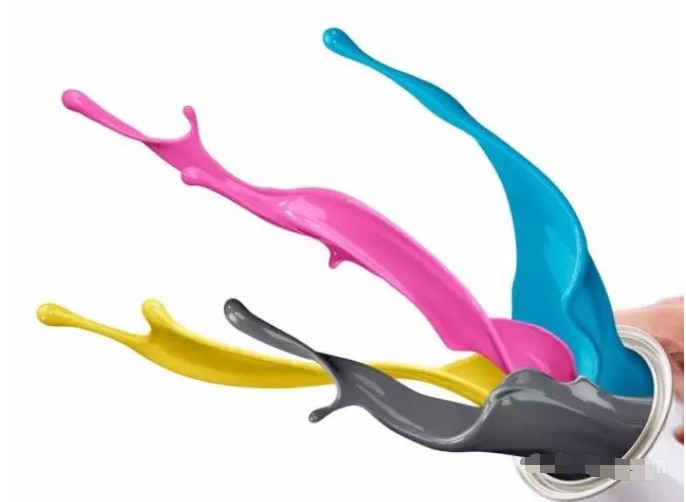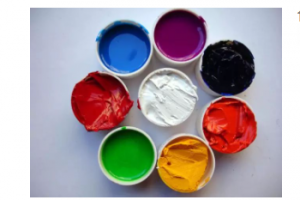Introductory color mixing skills and selectionColor paste
Water-based color paste refers to organic and inorganic pigments and surfactants dispersed in an aqueous medium and then crushed to form a stable pigment suspension.
Inorganic colorants: Most of them are iron oxide-based; they have excellent acid and alkali resistance, weather resistance, and light resistance. For example: Y42 iron yellow, iron black, R101Y/R101V iron red

Organic color paste: organic synthetic type; the unit price of color paste is relatively high, and the light and weather resistance of some color pastes is low; when using it, it should be based on the order requirements; pay attention to the matching selection of color paste. Colorants with the same pigment number as Y74\83 and R112 are not recommended for use on exterior walls; they can only be used on exterior walls when the amount of colorant added reaches 4%. Please consult the technical department immediately for specific applications.
For example: R254/112 red, O73 orange, BK7/6800HT carbon black, Y74\154\83\110 yellow, B153 phthalocyanine blue, G7 phthalocyanine green, V23 purple, R122 rose red, titanium white (titanium white Strong achromatic power, covering effect)
Notes on color correction application:
① Reduce costs as much as possible while ensuring covering power. That is to say, reduce the amount of color paste, but you cannot reduce the amount of color paste unlimitedly
l A paint contrast ratio greater than 0.95 generally indicates that the hiding power is qualified
l Relatively deep and brightly colored paints should undergo a constructability test: there is not much difference in the color of the dry film after rolling twice and three times (judgment based on experience). It is not included in the quality inspection assessment; but can be used as a reference.

② Avoid paint problems caused by floating color, blooming, etc. (consider the content of emulsion and titanium dioxide)
Finger grinding method: Take 100 grams of white paint, add 2-3 grams of the color paste to be tested, stir thoroughly, and apply it on the surface of the object to be coated. When it is about to solidify, use your fingers to grind the surface of the coating film. After the paint film is completely dry, observe whether there is a color difference between the areas that have been rubbed with your fingers and those that have not been rubbed. If the difference is large, the compatibility of the color paste with the paint being tested is not good. Paint is prone to color floating. If the colors are the same, there will generally be no floating color phenomenon.
Color system: 1. Iron oxide system 2. Blue-gray system 3. Warm color system
Light color: The total amount of color paste is less than 1%, and the black paste is less than 0.5%
Medium dark color: The amount of color paste used is between 1% and 3%
Dark color: more than 3% (covering ability reaches more than 95%)
Note: Determine the main color, but it does not mean that you add more colorant for the main color. Consider the inorganic type first, then the organic type.
When mixing medium and dark paints, the amount of titanium dioxide should be reduced to reduce the achromatic power and improve the tinting power. When mixing particularly dark colors, use white paint with a titanium dioxide content close to “0”. For particularly bright and bright colors, choose those with a large amount of lotion.
There are many types of color pastes to choose from, and the colors produced tend to be darker. On the contrary, there are fewer types of color pastes, and the colors produced are brighter and more saturated.
1. Tinting strength (tinting power) of color paste
Tinting strength is an important indicator, which reflects the color concentration, color development performance and pigment dispersion flocculation of the color paste. The data is measured based on the number of pigment slurries required for the color to reach 1/25 of the International Standard Depth (ISD). The smaller the value, the higher the tinting power. The numerical value represents the number of grams of color paste required to be added to the white base paint: In latex paint – the titanium dioxide content of the white base paint is 25% (1/25ST)
2. Compatibility of color paste (color development performance – finger grinding method)
The compatibility of the color paste and the system used is the key to affecting the floating, blooming, flocculation and surface defects of some paint films. If the fineness of the color paste is not enough, poor dispersion properties will lead to poor color development of the color paste, which will affect the reproducibility of the paint.
3. Dispersion performance of color paste (degree of flocculation)
The dispersion performance of the color paste is not good. The migration difference between the pigment flocs in the color paste and the white pigment and filler particles in the base material is relatively easy to show. This difference often makes the pigment flocs no longer evenly distributed and is regarded as Due to the slight differences in temperature, density and surface tension within the paint film, the pigment flocs and paint base naturally participate in this movement, and the pigment flocs separate accordingly, resulting in floating colors and blooming. If the dispersion performance of the color paste is good, floating color and blooming can be avoided.
4. Light resistance and weather resistance of color paste
Lightfastness: Level 1 is the worst, Level 8 is the best
Weather resistance: Level 1 is the worst, Level 5 is the best
5. Pigment content of color paste
The tinting power and color of color pasteMaterial content is not a simple proportional relationship. Same pigment content. The tinting strength also varies greatly depending on the fineness.
6. Fineness of color paste
Fineness is an intuitive indicator that reflects the coloring power dispersion effect and storage stability of the color paste. Generally speaking, for the same pigment paste, the smaller the particle size, the greater the specific surface area, thus increasing the covering ability and the higher the tinting power; the smaller the fineness, the higher the gloss, and the dispersion effect and storage stability are poor. The better. Of course, the fineness of the color paste is not as fine as possible, because when the particles become smaller and their specific surface area increases, the absorbed light energy increases and the degree of damage also increases, resulting in a decrease in weather resistance; and the particle size is too large When the paint film forms and dries, as the water precipitates, the color paste migrates to the surface, which can easily lead to inaccurate color matching and color difference on the wall.
7. Acid and alkaline resistance of color paste
8. The following factors must be considered for external use: a. Light and weather resistance; b. Acid and alkali resistance; c. Compatibility with the system used; d. Tinting strength, hiding power and color development; e. Color paste Compatibility with color paste quality inspection; f. Storage stability of color paste